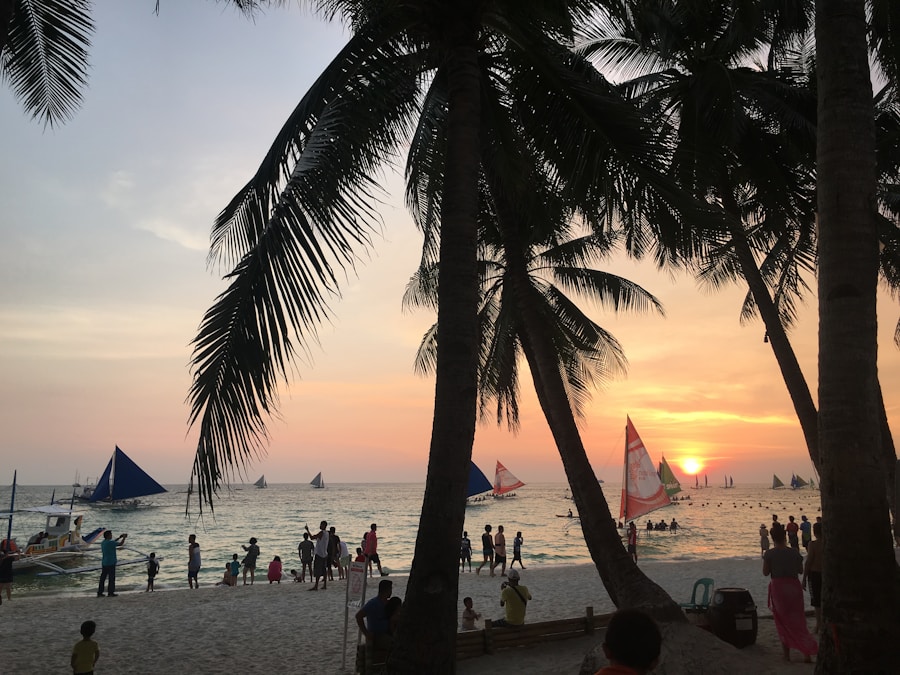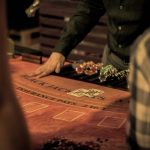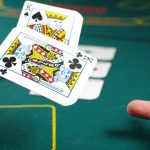Download links
How to install Discovering the Beauty of Boracay: A Tropical Paradise APK?
1. Tap the downloaded Discovering the Beauty of Boracay: A Tropical Paradise APK file.
2. Touch install.
3. Follow the steps on the screen.
Description
Boracay, a small island located in the central Philippines, has long been celebrated as one of the world’s premier beach destinations. Known for its powdery white sand beaches and crystal-clear waters, Boracay has become synonymous with tropical paradise. The island spans approximately 7 kilometers in length and is surrounded by the Sulu Sea, making it an ideal spot for both relaxation and adventure.
Its stunning natural beauty, combined with a vibrant local culture, has attracted millions of tourists from around the globe, eager to experience its unique charm. The island’s transformation into a tourist hotspot began in the 1970s when backpackers discovered its unspoiled beaches. Over the decades, Boracay has evolved into a bustling hub of activity, offering a wide range of accommodations, dining options, and recreational activities.
Despite its popularity, Boracay has managed to retain much of its natural allure, thanks in part to ongoing conservation efforts. The island’s appeal lies not only in its breathtaking landscapes but also in the warm hospitality of its residents, who are eager to share their culture and traditions with visitors.
Key Takeaways
- Boracay is a popular tourist destination in the Philippines known for its stunning beaches and vibrant nightlife.
- The pristine beaches of Boracay offer crystal clear waters and powdery white sand, making it a perfect spot for relaxation and water activities.
- Boracay’s nightlife is vibrant and diverse, with a wide range of bars, clubs, and restaurants offering entertainment and fun until the early hours of the morning.
- Water activities and adventures in Boracay include snorkeling, scuba diving, parasailing, and island hopping, providing endless opportunities for adventure and exploration.
- Exploring the local culture and cuisine of Boracay allows visitors to experience traditional Filipino dishes, local crafts, and cultural performances, providing a deeper understanding of the island’s heritage.
- Sustainable tourism in Boracay is a growing focus, with efforts to preserve the natural beauty of the island and promote responsible travel practices to protect the environment and local communities.
The Pristine Beaches of Boracay
Exploring White Beach Stations
Station 1 is known for its upscale resorts and quieter ambiance, while Station 2 is the heart of the island’s activity, bustling with restaurants, bars, and shops. Station 3 offers a more laid-back vibe, perfect for those seeking solitude and relaxation.
Discovering Other Beaches on Boracay
Beyond White Beach, Boracay boasts several other picturesque beaches worth exploring. Puka Shell Beach, located on the northern tip of the island, is famous for its unique puka shells that dot the shoreline. This beach is less crowded than White Beach and offers a more tranquil setting for sunbathing and swimming. Another hidden gem is Bulabog Beach, which is popular among windsurfers and kiteboarders due to its strong winds and shallow waters.
A Beach for Every Taste
Each beach on Boracay presents a different experience, allowing visitors to choose their ideal spot based on their preferences.
The Vibrant Nightlife of Boracay

As the sun sets over Boracay, the island transforms into a vibrant nightlife hub that caters to all tastes and preferences. The beachfront comes alive with an array of bars and clubs that offer everything from laid-back acoustic music to high-energy dance parties. One of the most popular spots is the famous “Happy Hour” at various beachfront bars, where tourists can enjoy discounted drinks while watching the sunset paint the sky in hues of orange and pink.
For those seeking a more upscale experience, venues like Cocomangas Shooter Bar provide an electrifying atmosphere with live DJs and themed parties. The bar is known for its signature drink challenge, where patrons attempt to drink 15 different shots in one sitting—a rite of passage for many visitors. Additionally, beach parties often feature fire dancers and live performances that create an unforgettable ambiance under the stars.
Whether one prefers a quiet evening sipping cocktails by the shore or dancing until dawn, Boracay’s nightlife offers something for everyone.
Water Activities and Adventures in Boracay
| Activity | Location | Duration | Price |
|---|---|---|---|
| Parasailing | White Beach | 15 minutes | PHP 2,000 |
| Jet Skiing | Bulabog Beach | 30 minutes | PHP 1,500 |
| Stand-up Paddleboarding | Puka Beach | 1 hour | PHP 800 |
| Snorkeling | Coral Garden | 2 hours | PHP 1,200 |
| Scuba Diving | Yapak Wall | 3 hours | PHP 3,000 |
Boracay is a veritable playground for water sports enthusiasts, offering an extensive range of activities that cater to both thrill-seekers and those looking to unwind on the water. Snorkeling and scuba diving are among the most popular activities, with numerous dive shops providing equipment rentals and guided tours to some of the best dive sites around the island. The vibrant coral reefs teeming with marine life make for an unforgettable underwater experience.
For those seeking adrenaline-pumping adventures, parasailing offers breathtaking views of the island from above while gliding over the azure waters. Jet skiing and banana boat rides are also popular choices for those looking to add a bit of excitement to their beach day. Stand-up paddleboarding has gained traction in recent years as a more leisurely way to explore the coastline while enjoying the serene surroundings.
With so many options available, visitors can easily fill their days with thrilling water activities or simply relax by the shore.
Exploring the Local Culture and Cuisine of Boracay
Boracay is not just about stunning beaches and vibrant nightlife; it also offers a rich tapestry of local culture and cuisine that reflects the island’s heritage. The indigenous Ati people are among the original inhabitants of Boracay, and their influence can still be felt today through various cultural festivals and events. The Ati-Atihan Festival, celebrated in January, showcases traditional music, dance, and colorful costumes that pay homage to the island’s history.
Culinary exploration is another highlight of visiting Boracay. The island boasts a diverse array of dining options that cater to all tastes—from local Filipino dishes to international cuisine. Fresh seafood is a staple on many menus, with local restaurants serving up grilled fish, shrimp, and squid caught daily from surrounding waters.
Dishes like adobo and sinigang offer visitors a taste of traditional Filipino flavors, while street food stalls provide an opportunity to sample local snacks such as fish balls and halo-halo—a refreshing dessert made with shaved ice and various sweet ingredients.
Sustainable Tourism in Boracay

In recent years, Boracay has faced challenges related to over-tourism and environmental degradation. In response to these issues, the Philippine government implemented a six-month closure of the island in 2018 to rehabilitate its natural resources and infrastructure. This initiative aimed to restore Boracay’s pristine environment while promoting sustainable tourism practices that would benefit both visitors and residents alike.
Sustainable tourism efforts in Boracay include stricter regulations on waste management and construction practices to minimize environmental impact. Many resorts have adopted eco-friendly initiatives such as using solar energy, reducing plastic waste, and supporting local communities through responsible sourcing of food and materials. Tourists are encouraged to participate in beach clean-up activities and support local businesses that prioritize sustainability.
By fostering a culture of environmental stewardship, Boracay aims to preserve its natural beauty for future generations while continuing to welcome travelers from around the world. In conclusion, Boracay stands as a testament to the delicate balance between tourism and environmental conservation. Its breathtaking beaches, vibrant nightlife, thrilling water activities, rich culture, and commitment to sustainability make it a destination that captivates all who visit.
As travelers continue to flock to this tropical paradise, it remains essential to prioritize responsible tourism practices that ensure Boracay’s beauty endures for years to come.
If you’re planning a trip to Boracay, you may also be interested in reading about the best football experiences online. Check out mom/2025/03/03/tg777-football-menikmati-sensasi-sepak-bola-online-terbaik/’>this article to learn more about enjoying the thrill of online soccer.
Whether you’re lounging on the beach in Boracay or watching a game from the comfort of your own home, football can provide an exciting and immersive experience.
FAQs
What is Boracay?
Boracay is a small island in the Philippines known for its beautiful white sand beaches and clear blue waters. It is a popular tourist destination for its stunning natural beauty and vibrant nightlife.
What are the popular activities in Boracay?
Some popular activities in Boracay include swimming, snorkeling, scuba diving, kite surfing, and island hopping. The island also offers a variety of restaurants, bars, and shops for visitors to enjoy.
When is the best time to visit Boracay?
The best time to visit Boracay is during the dry season, which runs from November to April. This is when the weather is most pleasant and the waters are calm, making it ideal for beach activities.
Is Boracay family-friendly?
Yes, Boracay is a family-friendly destination with plenty of activities and accommodations suitable for families. The island offers a range of options for visitors of all ages, including kid-friendly resorts and attractions.
Are there any environmental regulations in Boracay?
Yes, in 2018, the Philippine government closed Boracay for six months to undertake a massive rehabilitation effort to address issues such as overdevelopment, pollution, and overcrowding. Since then, the government has implemented strict environmental regulations to protect the island’s natural beauty.





